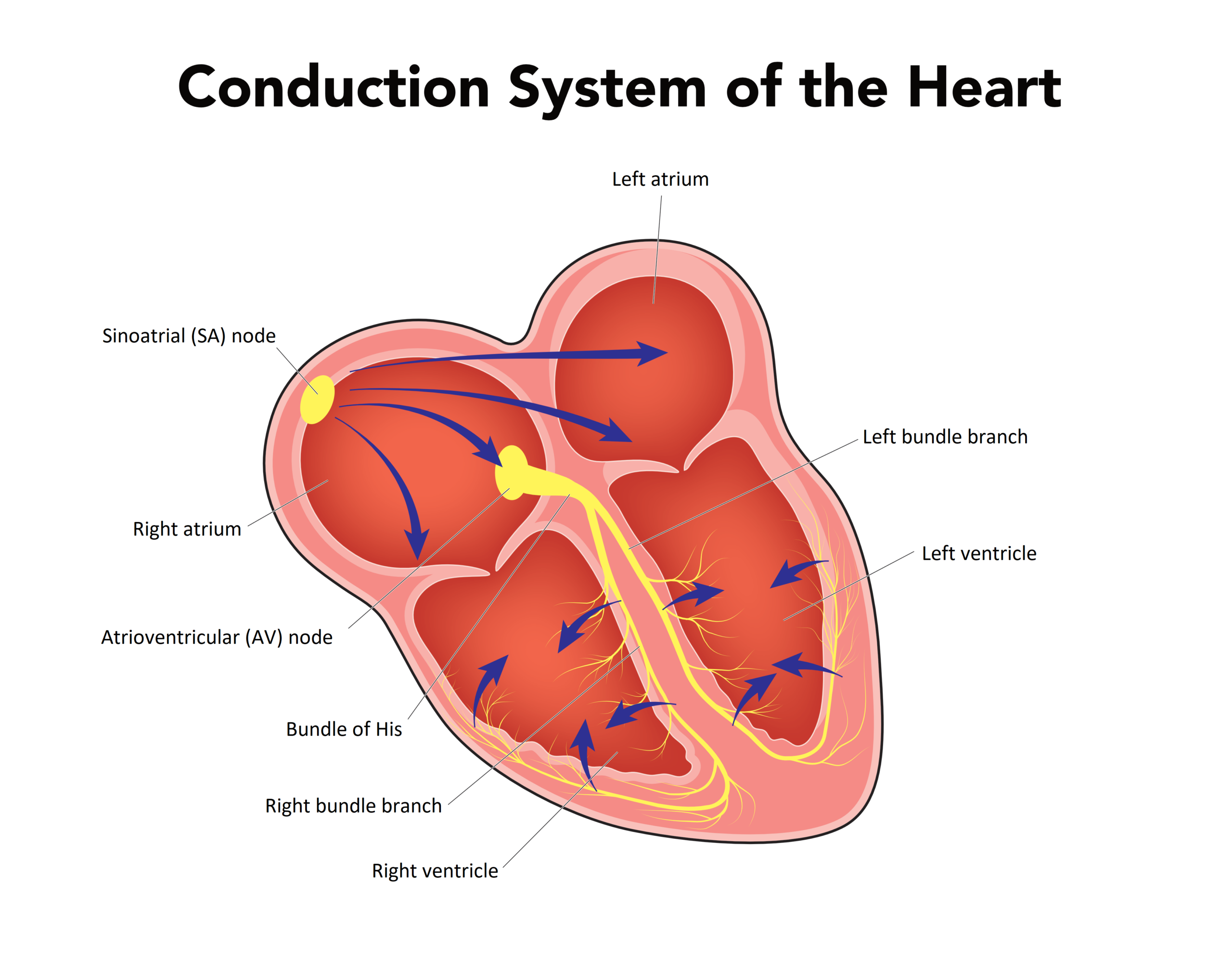Chapter Progress
0% Complete
Get Arrhythmia Interpretation Certified Today
Sinus Node Rhythms – Normal Sinus Rhythm
Normal sinus rhythm is the normal rhythmic pattern of the healthy heart (see Figure 3.1); it is not an arrhythmia. The following characteristics of a normal sinus rhythm should be kept in mind when monitoring Lead II in a 6-second ECG strip:
- The pacemaker impulse comes from the SA node and promptly travels through the normal conduction pathways.
- The P wave pattern is uniform.
- One P wave proceeds each QRS complex.
- The atria depolarize first, followed by the ventricles.
- The inherent rate of the SA node is 60–100 bpm.
- Any rate < 60 bpm or > 100 bpm is not considered a normal sinus rhythm.
- Normal sinus rhythm is regular.
- The R-R interval should be regular across the rhythm strip.
- If abnormal beats are present, but the rhythm is sinus in origin, we say that the underlying rhythm is normal sinus rhythm.
If two premature ventricular contractions (PVCs) are present on a 6-second strip and the rest of the pattern is consistent with normal sinus rhythm, we would say that the rhythm is normal sinus rhythm with PVCs.
- The PR interval of the normal sinus rhythm is 120–200 milliseconds (0.12–0.20 seconds).
- Any interval > 120 milliseconds or < 200 milliseconds means that the rhythm is not a normal sinus rhythm.
- The PR interval should be consistent throughout the ECG strip.
- It is not a normal sinus rhythm if the PR interval varies from one beat to another, even if the PR interval is consistently between 120 and 200 milliseconds.
When evaluating a 6-second ECG strip, if the first PR interval is 130 milliseconds and the subsequent PR interval is 150 milliseconds, the rhythm would not be interpreted as a normal sinus rhythm.
- The QRS complex should be < 120 milliseconds (0.12 seconds).
Figure 3.1. The Conduction System of the Heart

Heart’s Conduction System